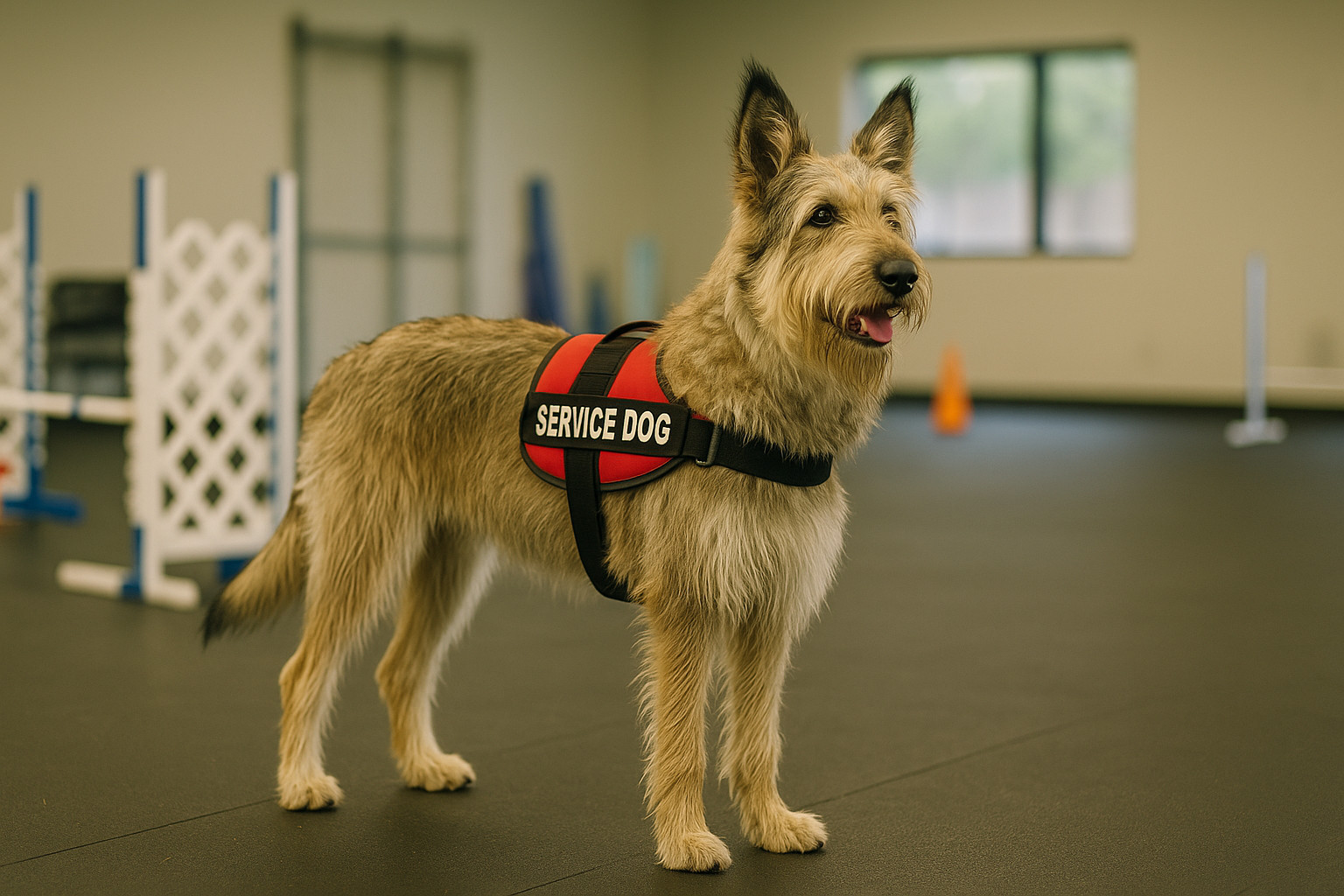Berger Picard as a Service Dog

The Berger Picard is a unique and rare breed, often recognized by its distinctive appearance and lively personality. Though not as commonly used as service dogs compared to breeds like Labrador Retrievers or Golden Retrievers, the Berger Picard has specific attributes that can make it an exceptional candidate for certain service roles. The following guide delves into the Berger Picard's suitability as a service dog by examining its physical characteristics, temperament, potential service roles, health considerations, and trainability.
Berger Picard Overview
The Berger Picard, also known as the Picardy Shepherd, hails from France and is known for its shaggy coat, expressive features, and boundless energy. While originally bred for herding, these dogs have found their place in the modern world as companions and, to some extent, as service animals. Their strong sense of loyalty, combined with intelligence and trainability, makes them noteworthy in certain types of service work.
Physical Characteristics
The Berger Picard stands out with its rustic, somewhat scruffy appearance, which belies its athletic build and robust constitution. When assessing this breed for service work, physical attributes play a crucial role.
- Size and Build: Berger Picards typically weigh between 50 and 70 pounds, with males reaching up to 26 inches at the shoulder and females slightly smaller. This medium-large size is versatile for various service tasks, providing strength without being overwhelming.
- Coat and Maintenance: The breed's coarse, wavy coat provides protection against diverse weather conditions, a crucial trait for dogs assisting in outdoor environments. However, their grooming needs are relatively low, requiring regular brushing but infrequent bathing to maintain coat health.
- Energy Level: With a high energy level derived from their herding background, Berger Picards require ample physical and mental stimulation. This attribute is beneficial for active service roles but requires careful management to ensure the dog's needs do not overshadow those of the handler.
Temperament and Attitude
The temperament of a service dog is as vital as its physical abilities. Berger Picards bring a blend of traits that can either shine under structured training or, if unchecked, pose challenges in a service capacity.
- Intelligence and Problem-Solving: Known for their intelligence, Berger Picards excel in problem-solving tasks, a trait advantageous in service work requiring quick thinking and adaptability. However, their independent streak requires firm and consistent training to prevent undesirable behaviors.
- Loyalty and Bonding: These dogs tend to form strong bonds with their handlers, essential for the trust needed in a service partnership. Their protective nature, while beneficial in security roles, must be moderated to avoid over-vigilance or reactivity.
- Socialization and Public Behavior: Berger Picards require early socialization to become accustomed to various environments and stimuli. Poor socialization can lead to wariness in new situations, whereas a well-socialized Picard can navigate crowded public spaces confidently.
Types of Service Work
While not as universally versatile as some breeds, Berger Picards can excel in specific service roles thanks to their distinctive traits.
- Mobility Assistance: Their strength and size allow them to provide support for individuals with mobility challenges, whether through balance assistance or retrieving objects.
- Medical Alert: With sharp senses, Berger Picards can be trained to detect medical issues, such as seizures or changes in glucose levels, though this should be undertaken with an experienced trainer due to their complex nature.
- Psychiatric Assistance: Their loyalty and bond-forming make them suitable for psychiatric service roles, offering comfort through grounding techniques or interrupting harmful behaviors.
Health Considerations
The health and longevity of a service dog are paramount to its effectiveness and reliability. Berger Picards generally have few health issues but being aware of potential concerns helps in preventative care and service life planning.
- Hip Dysplasia: As with many medium to large breeds, Berger Picards may be prone to hip dysplasia. Regular veterinary check-ups and maintaining an appropriate weight can mitigate the impact on their functionality as service dogs.
- Eye Issues: Some Berger Picards may develop progressive retinal atrophy, affecting their vision. Regular eye exams help in early detection and management.
- Lifespan: With a lifespan of 12 to 14 years, these dogs provide a long-term partnership in service roles, assuming health issues are well-managed.
Training and Suitability
Effective training is crucial for any service dog, and the Berger Picard presents both opportunities and challenges in this area.
- Trainability: Berger Picards are quick learners with a keen memory, making them responsive to training. Their intelligence is a dual-edged sword; they can become bored if not stimulated, so training should be structured yet varied to maintain engagement.
- Independence: The breed's independence, a trait from their herding days, means they may not always follow commands unquestioningly. This requires a trainer capable of establishing clear leadership and trust.
- Behavioral Consistency: Due to their potential for independent thought, consistent training and reinforcement from an early age are necessary to ensure they meet service dog standards across various tasks and environments.
Summary of Berger Picard
The Berger Picard can be a remarkable service dog for the right individuals, particularly those needing support in specific areas that play to the breed's strengths. However, their suitability requires an understanding of their unique needs, ongoing commitment to training, and regular health monitoring. Here's a summary of their key traits:
- Strengths:
- Medium to large size lends itself to strength-based tasks.
- High intelligence aids problem-solving in complex environments.
- Strong loyalty and bond-forming make them ideal for emotional and psychiatric roles.
- Weaknesses:
- High energy requires careful management for balance in service roles.
- Independent nature may challenge authority without firm training.
- Potential for specific health issues like hip dysplasia and eye disorders.
- Ideal Service Roles:
- Mobility and balance assistance
- Specialized medical alerting
- Psychiatric and emotional support
In conclusion, while the Berger Picard may not fit the typical mold of a service dog, with proper training and care, they can provide invaluable assistance to those who seek a dedicated and intelligent companion.











